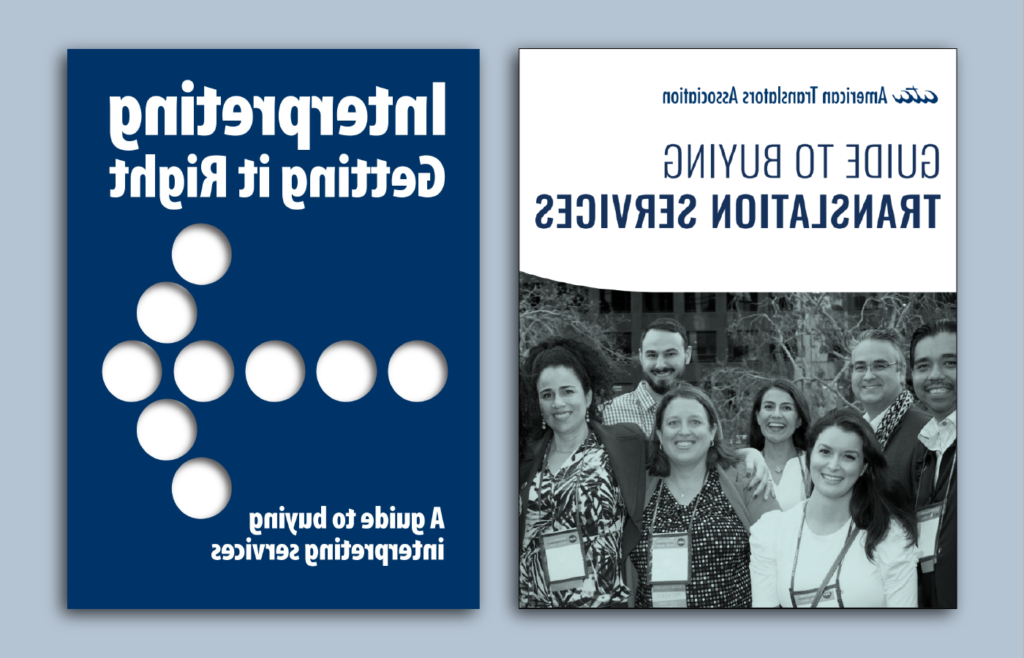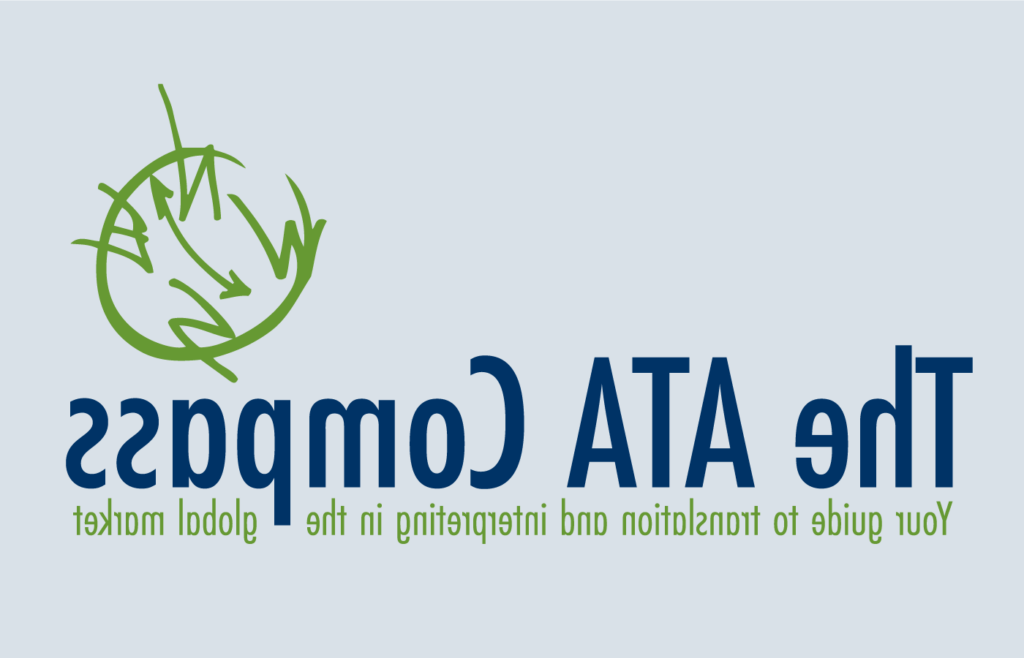Section 1557 of the Affordable Care Act and Language Access: Who, What, How

By María Baker
The text quoted in this article can be reviewed at its source, the Federal Register. The information herein is not intended as legal advice. If you need legal assistance, consult a lawyer.
What is Section 1557 of the Affordable Care Act?
The goal of the Affordable Care Act is to expand access to healthcare, especially to underserved and marginalized populations. As part of this goal, this law includes a section that prohibits discrimination on the basis of race, color, national origin, age, disability, or sex. The prohibition applies to certain covered health programs or activities and includes individuals with limited English proficiency (Section 1557). Including such a provision in this law seeks to grant access to healthcare to as many people as possible, and to leave as few as possible without the healthcare they need.
One section, many different regulations
This 2024 final rule comes after two other “final” rules (in 2016 and 2020) that introduced their own changes. This may mean that, if your organization is a covered entity, you need to understand these changes to ensure compliance.
On July 5, 2024, the final implementing rule for Section 1557 of the Affordable Care Act (ACA) became law. An implementing rule is a legally binding regulation that provides details on how to comply with and enforce a law. In this case, the final implementing rule provides guidance and specifications for the application of Section 1557.
A key component of Section 1557 is language access. It is addressed in several important ways. To help those responsible for language access in covered entities, here are some questions that may arise, and the answers that the 2024 final implementing rule provides.
Which entities does Section 1557 of the ACA apply to (covered entities)?
The 2024 final rule applies to:
(1) every health program or activity, any part of which receives Federal financial assistance, directly or indirectly, from the Department;
(2) every health program or activity administered by the Department; and
(3) every program or activity administered by a Title I entity.
For the purposes of the implementing rule, the Department means the U.S. Department of Health and Human Services. Title I entities include State Exchanges (including those on the Federal platform) and Federally-facilitated Exchanges, both of which were created under Title I of the ACA.
The rule further clarifies that it shall not apply to “any employer or other plan sponsor of a group health plan, including but not limited to, a board of trustees (or similar body), association or other group, with regard to its employment practices, including the provision of employee health benefits.” After receiving many comments on the subject, the Office of Civil Rights (OCR) considered that concerns related to employee health benefits would be best resolved by other Federal agencies.
Federal financial assistance can take many forms: grants, loans and other types of assistance from the Federal Government, personnel, credits, subsidies and contracts of insurance, among others.
Some examples of covered entities are:
- State and Federal Marketplaces (“Exchanges”)
- Medicaid and Medicare
- Subcontractors of covered entities (in certain cases)
- State Medicaid programs
- Entities that engage in health or clinical research
Do covered entities need a Section 1557 coordinator?
If your organization is a covered entity with 15 or more employees, the 2024 final implementing rule states that at least one Section 1557 Coordinator must be appointed. The coordinator must fulfill these responsibilities, at a minimum:
- Receive and process grievances
- Coordinate recordkeeping requirements
- Coordinate implementation of language access procedures
- Coordinate implementation of effective communication procedures
- Coordinate implementation of reasonable modification procedures
- Coordinate training of employees and pertinent documentation
What are our obligations to patients?
This question addresses the crux of the matter: As a covered entity under Section 1557, what do we need to do?
The general requirement is to “take reasonable steps to provide meaningful access to each individual with limited English proficiency (including companions with limited English proficiency) eligible to be served or likely to be directly affected by its health programs and activities.” These services must be offered in a timely manner, free of charge, and protect the privacy and decision-making ability of the person with LEP.
For additional clarity, the rule defines someone with limited English proficiency as “an individual whose primary language for communication is not English and who has a limited ability to read, write, speak, or understand English. An individual with limited English proficiency may be competent in English for certain types of communication (e.g., speaking or understanding), but still be limited English proficient for other purposes (e.g., reading or writing).”
Furthermore, language services must be performed by qualified professionals, which the 2024 final implementing rule defines as follows:
A qualified interpreter for an individual with LEP must be a proficient bilingual person; be able to interpret effectively, accurately, and impartially; know specialized vocabulary; keep the message intact, including tone, sentiment, and emotions; and adhere to interpreter ethical principles.
A qualified translator has to show proficiency in writing and understanding written English and another language(s); be able to translate effectively, accurately, and impartially; keep the message intact, including tone, sentiment, and emotion; and adhere to translator ethical principles.
What are our obligations to patients’ companions?
A new feature introduced in the 2024 implementing rule is the inclusion of patient companions to individuals with LEP. This change was welcome, according to many comments received by OCR, as healthcare providers are very likely to be communicating with the patient’s companion.
The 2024 rule defines a companion as “a family member, friend, or associate of an individual seeking access to a service, program, or activity of a covered entity, who along with such individual, is an appropriate person with whom a covered entity should communicate.”
We use video remote interpreting (VRI). What does the 2024 rule stipulate for VRI?
Covered entities must meet the following requirements when using VRI:
“(1) Real-time, full-motion video and audio over a dedicated high-speed, wide-bandwidth video connection or wireless connection that delivers high quality video images that do not produce lags, choppy, blurry, or grainy images, or irregular pauses in communication;
(2) A sharply delineated image that is large enough to display the interpreter’s face and the participating person’s face regardless of the person’s body position;
(3) A clear, audible transmission of voices; and
(4) Adequate training to users of the technology and other involved persons so that they may quickly and efficiently set up and operate the video remote interpreting.”
In summary, the connection, audio, and video must be of high quality, and the staff involved must be trained in the use of pertinent equipment and procedures.
What happened to “taglines”?
Language access “taglines” were established by the first “final” implementing rule in 2016. They are short notices that inform patients of the availability of language access services. This requirement was eliminated in 2020 and reinstated in 2024 in § 92.11: Notice of availability of language assistance services and auxiliary aids and services. The notice must be provided in English and at least the 15 most common languages in the state or states where the entity operates. It must also be provided in alternate formats for people with disabilities.
This section also includes the characteristics of the notice: when and where it should be displayed, typographical considerations, communications where it should be included.
Can a family member provide language services?
As a general rule, an adult who is not a qualified interpreter cannot provide language services. There are, however, two exceptions:
- Temporarily, while a qualified professional is found, in case of certain emergencies
- If the person with LEP requests this specifically and in private, with an interpreter present and with no accompanying adult present. The family member or other adult acting as an interpreter must agree, and both request and agreement must be documented.
Similar limitations apply to the use of children as interpreters: they can only act as such in certain emergencies WHILE a qualified interpreter is found.
Can bilingual staff provide language services?
Bilingual staff MAY NOT provide language services (translation or interpretation) unless they ALSO meet the requirements of a qualified translator or interpreter. They can, however, communicate directly with patients if they meet the requirements of qualified bilingual/multilingual staff as defined in § 92.4:
“(1) Proficient in speaking and understanding both spoken English and at least one other spoken language, including any necessary specialized vocabulary, terminology and phraseology; and
(2) Able to effectively, accurately, and impartially communicate directly with individuals with limited English proficiency in their primary languages.”
To be clear, you must ensure that your designated employee is indeed bilingual, so they can perform direct oral communication with patients, but not necessarily translation or interpreting.
Can we use machine translation?
While the implementing rule permits the use of machine translation, it establishes certain limitations.
The implementing rule defines machine translation as “automated translation, without the assistance of or review by a qualified human translator, that is text-based and provides instant translations between various languages, sometimes with an option for audio input or output.”
It further states that “If a covered entity uses machine translation when the underlying text is critical to the rights, benefits, or meaningful access of an individual with limited English proficiency, when accuracy is essential, or when the source documents or materials contain complex, non-literal or technical language, the translation must be reviewed by a qualified human translator.”
How “final” is the 2024 implementing rule?
With the recent change in federal administration, it would not be surprising if this rule were to change once again.
To find out the latest news on this and other related topics, the website of the Department of Health and Human Services is a good place to start, especially their press releases and bulletins.
Another good resource to stay up to date on topics related to non-discrimination in healthcare is the National Health Law Program. The program’s site features a blog and a library of useful resources.
About the Author
 María Baker completed her BA in TESOL in Argentina in 2010, and her MA in Spanish and TESOL at West Virginia University in 2013. Passionate about professional development, she has over 10 years of experience in interpreting and translation. María became a CMI in 2014 and a CHI™ in 2018. She obtained her EN>ES ATA certification in 2021. She has conducted training for healthcare providers on interpreting and delivered workshops for interpreters. María volunteers in the Social Media Committee of the Spanish Language Division and the Professional Development and PR Committees at the ATA. She has been a member of ATA since 2019.
María Baker completed her BA in TESOL in Argentina in 2010, and her MA in Spanish and TESOL at West Virginia University in 2013. Passionate about professional development, she has over 10 years of experience in interpreting and translation. María became a CMI in 2014 and a CHI™ in 2018. She obtained her EN>ES ATA certification in 2021. She has conducted training for healthcare providers on interpreting and delivered workshops for interpreters. María volunteers in the Social Media Committee of the Spanish Language Division and the Professional Development and PR Committees at the ATA. She has been a member of ATA since 2019.








Leave a Comment